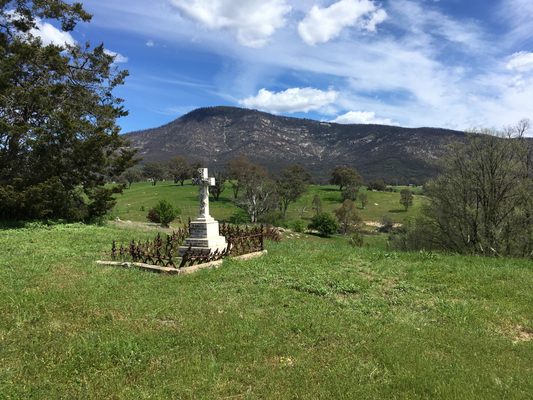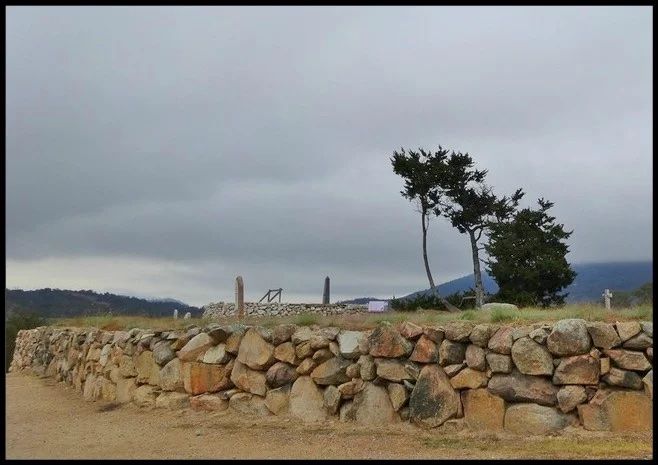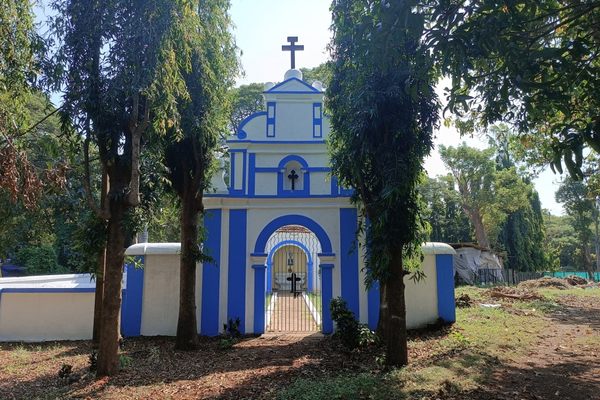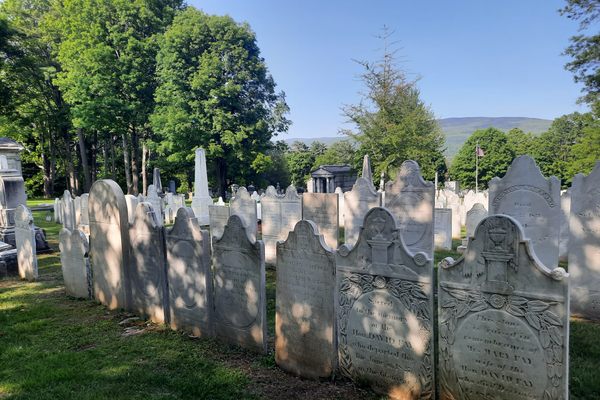About
The De Salis Cemetery is a rare example of a 19th-century pastoral station cemetery. Such private cemeteries were necessary due to the long distances needed to travel to public burial locations. This was particularly difficult for pastoral families and their workers on stations in Australia’s interior. Residents and workers were carefully segregated within the burial ground, reflecting the social order of the time.
The cemetery is situated high up in the junction of the Murrumbidgee and Gudgenby Rivers. It is also a short distance from the Cuppacumbalong Station homestead.
What makes this cemetery so unusual is that it has been elevated above the landscape and is surrounded by a dry stone wall. This was done because three previous burials in the river bank cemetery had been lost to floods in the 1870s. So when Charlotte De Salis died in February 1878, the family created a unique solution. Instead of digging down, they raised the cemetery up.
In 1878, they created an oval mound of soil from the river, surrounded by banks of stones hauled by horse and cart from Mount Tennant. A formal garden of trees was planted and an avenue of elms led from the homestead.
From 1878 to 1903, another 14 Cuppacumbalong residents and workers were buried here.
Related Tags
Know Before You Go
The cemetery is accessed by a 1.5-kilometer walk along the banks of the Murrumbidgee River, starting from the Tharwa Bridge car park.
Community Contributors
Added By
Published
June 3, 2021

























